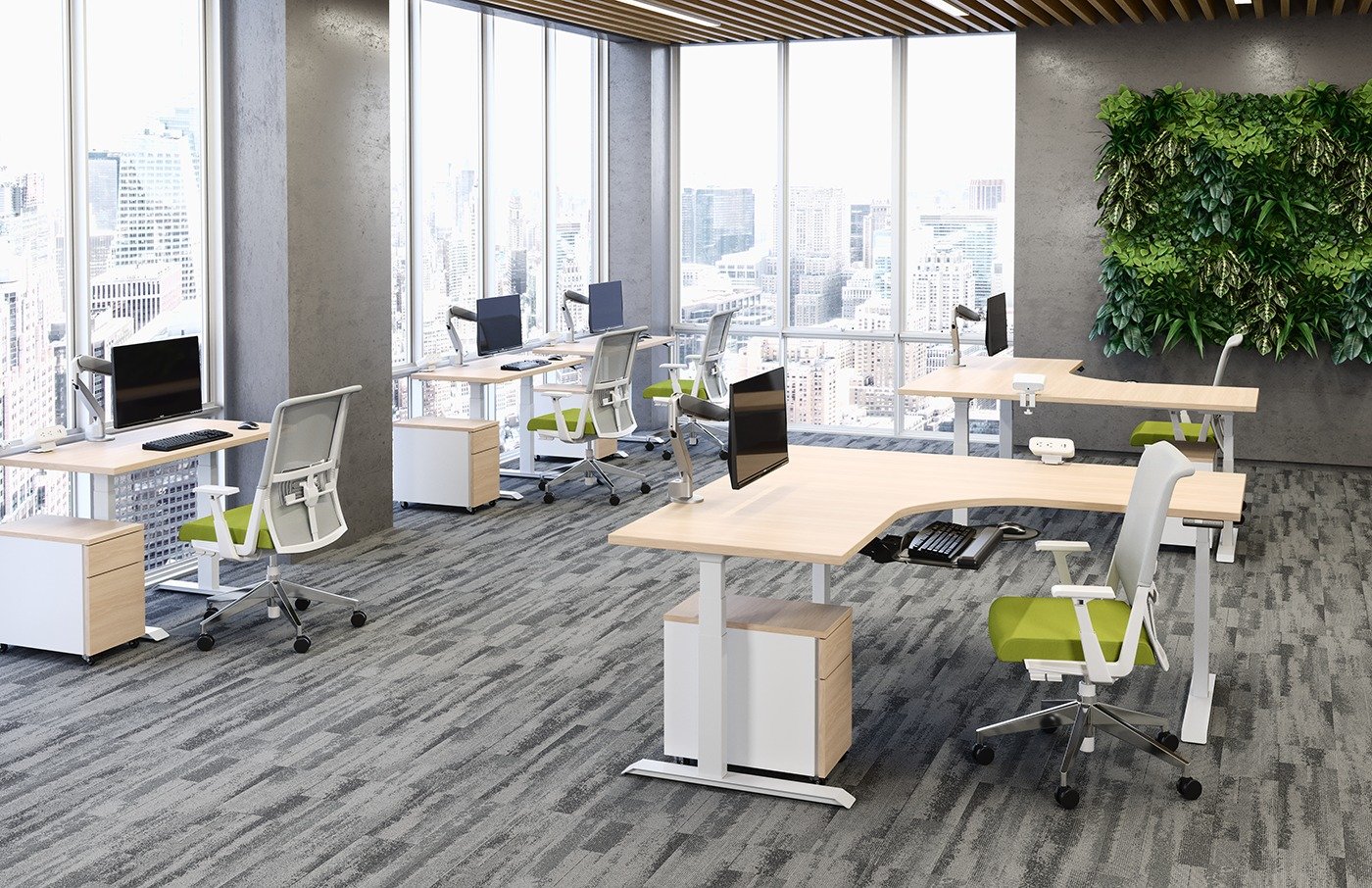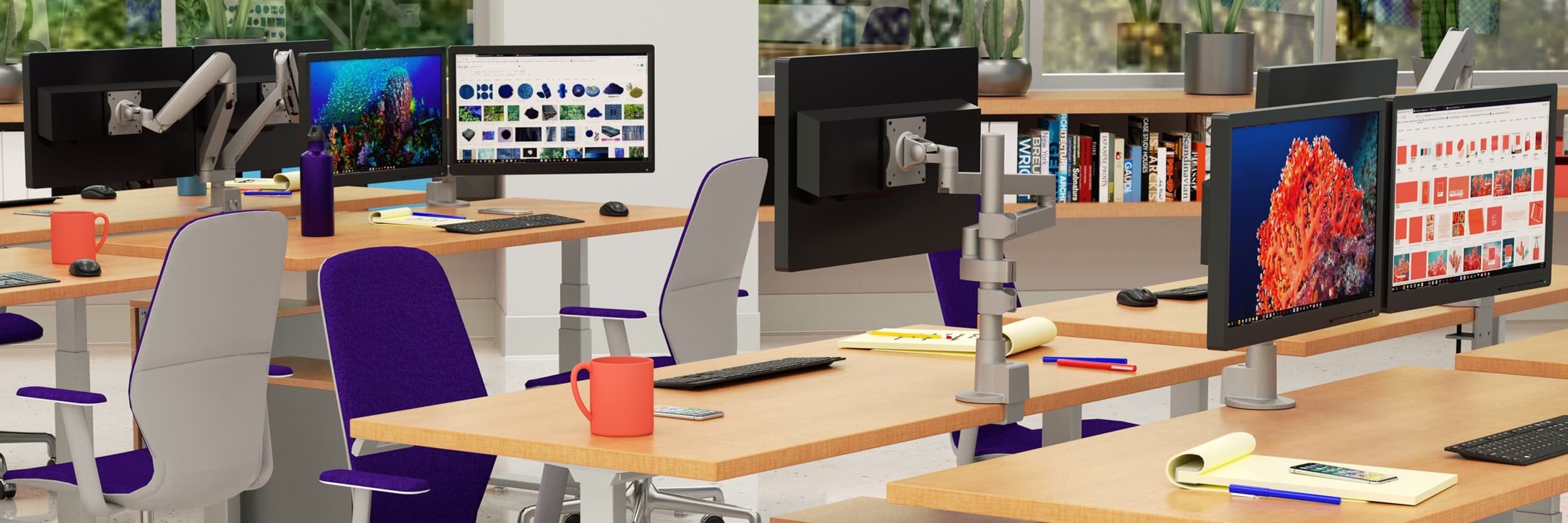Ergonomics & Accessories




Product Collections
-

Keyboard Trays
Adjustable keyboard trays are a great way to provide maximum ergonomic benefits and greater levels of comfort for any workforce. When used in conjunction with fixed height desks, or with sit stand desks featuring limited ranges of adjustability, an adjustable keyboard tray can improve the overall usability and ergonomic functionality of the entire workcenter. Workrite offers a broad selection of keyboard tray systems as well as individual keyboard platforms and keyboard arms that can be purchased separately, providing multiple solutions for virtually any application.
-

Sit-Stand Desks
The human body is not designed to remain in the same position for hours at a time. Finding the right sit stand desk or standing desk converter addresses this need to move and allows the user to change position frequently throughout the day can be a challenge. There are many options available and it is important to fully understand the needs of the user prior to making a purchase decision.
Sit Stand Desks are the foundation for any ergonomically equipped workspace and can be the single most effective means of achieving flexibility, maximizing comfort and increasing productivity in any office environment. Workrite’s product offering features the widest selection of design options in the industry as well as the flexibility to mix and match features to build the perfect desk for virtually any application or budget.
-

Monitor Arms
Monitor arms can be used with either fixed height or sit stand desks and are an excellent way to achieve the optimal level of adjustability recommended by ergonomists. When used appropriately, monitor arms can help workers avoid the development of musculoskeletal disorders (MSD), aid in the management of existing MSD, and help alleviate eye strain associated with long hours of computer use in the office. Monitor arms enable users to maintain neutral position of their shoulders, neck and back by allowing them to position their computer screen in the perfect location and angle for their height and the type of task they are performing. This adjustability is especially beneficial to users who wear corrective multi-focal lenses.
Ergonomic Postures
Regardless of how good your working posture is, working in the same posture or sitting still for prolonged periods is not healthy. You should change your working position frequently throughout the day in the following ways:
Make small adjustments to your chair or backrest
Stretch your fingers, hands, arms, and torso
Alternate between seated and standing positions while you work
The four working postures above are examples of body posture changes that all provide neutral positioning for the body.
Standing Posture
A – The height of your work surface should allow you to work without reaching or bending. Arrange commonly used items such as staplers and phones so that they are within easy reach.
B – Forearms should be parallel to the floor and at an approximate 90 degree angle from your upper arms.
C – Wrists, neck and head should be in a relaxed neutral position – not angled up or down.
D – The distance between your eyes and the monitor should be at least 15.7” or more – typically arms’ length.
E – To insure that neutral neck and head posture are maintained, individuals who wear corrective lenses, particularly multi-focal lenses, may need to adjust the height of their monitor to a lower position and tilt the monitor at 30°-40° angle.
Seated Posture
A – The height of your work surface should allow you to work without reaching or bending. Arrange commonly used items such as staplers and phones so that they are within easy reach.
B – Forearms should be parallel to the floor and at an approximate 90 degree angle from your upper arms.
C – Wrists, neck and head should be in a relaxed neutral position – not angled up or down.
D – The distance between your eyes and the monitor should be at least 15.7” or more – typically arms’ length.
E – The top one-third of your computer screen should be positioned at or below eye level.
F – Adjust the height of your seat so that your feet are resting firmly on the floor. Use a foot rest if you feel that your feet are not properly supported.
G – The depth of your seat should allow the back of your knees to extend beyond the edge of your seat. Thighs should be approximately parallel to the floor.



